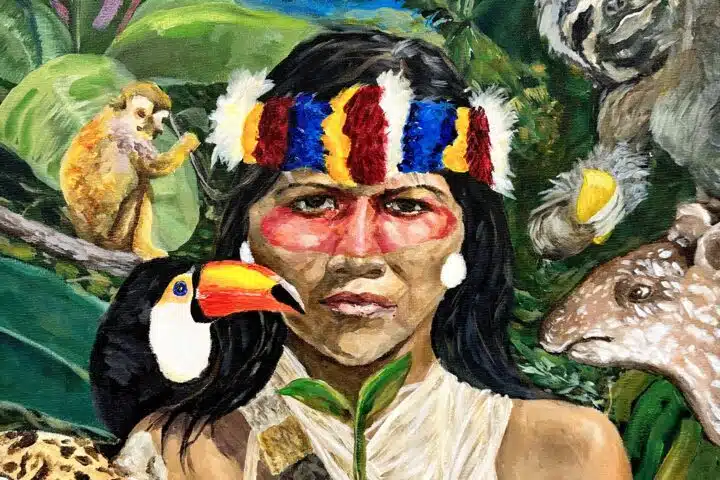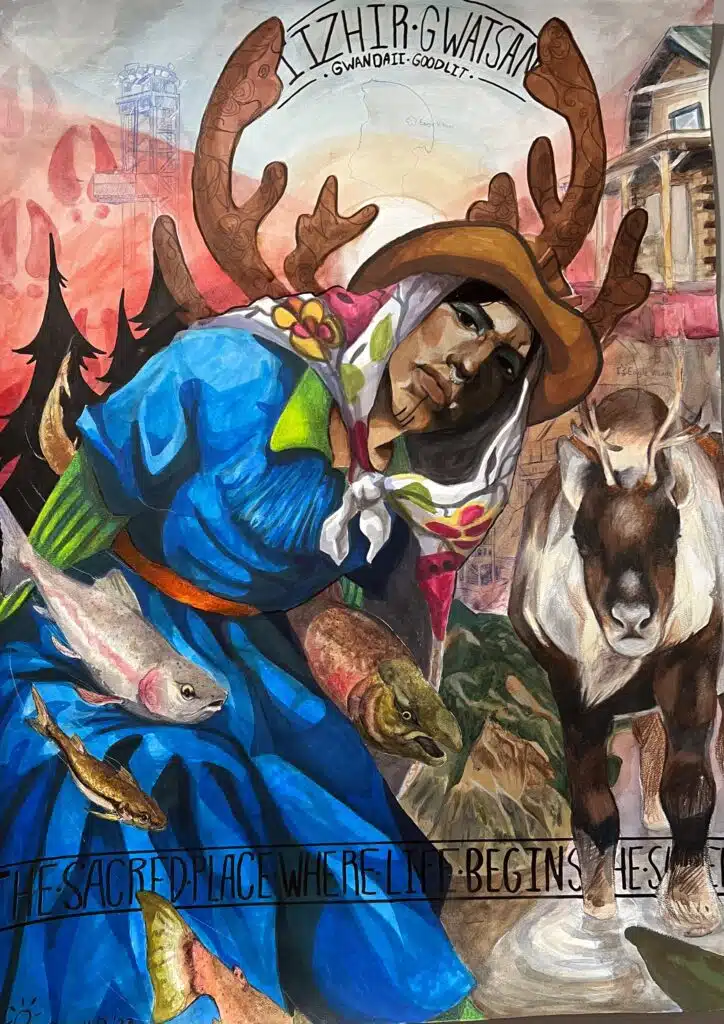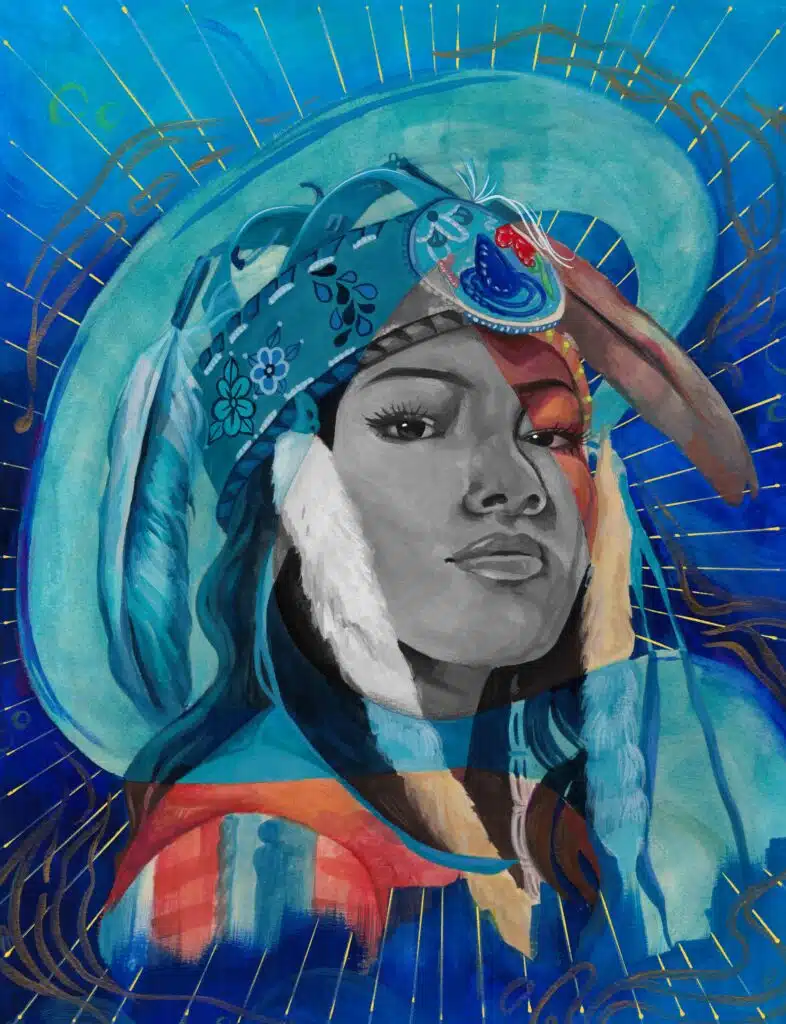
Silent Suffering: Pollution’s Impact on Indigenous Communities
July 9, 2024By María Paz Dakota Ormeño Vasquez, 2024 Future Blue Youth Council member
Pollution is a significant problem for indigenous communities worldwide. Deeply connected with their natural environments, these communities face severe health risks and cultural disruptions from industrial activities, deforestation, and toxic substances. Multiple studies have underscored their key role as custodians of global biodiversity. With approximately 80% of the remaining global biodiversity found on Indigenous Peoples’ lands, why are most people still ignorant about them?
One of their major issues is plastic pollution. The Badjao people of the Philippines, for example, struggle with plastic waste contaminating their fishing grounds, which disrupts their traditional way of life. This issue isn’t unique to them; Indigenous communities globally are grappling with similar challenges.

“Land, Life, and Liberty” by Sunny Dror Lior, 2023
Air pollution also disproportionately affects them. A Columbia University study found that Native American communities face higher levels of air pollutants, leading to increased respiratory issues like asthma and cardiovascular diseases. A McGill University study further highlights how worldwide, their lands and resources are often being exploited for industrial purposes, which can lead to certain cancers, respiratory diseases, high rates of miscarriage, kidney diseases, etc. This isn’t just an environmental problem; it’s a human rights issue. Exposure to toxic substances has been recognized by the United Nations as a form of environmental violence against indigenous people. This kind of violence undermines their rights and well-being, stripping them of the ability to live in harmony with their environment. The destruction of essential natural resources disrupts their survival and cultural practices.
Furthermore, the issue of pollution extends beyond plastic and air contamination. Water sources, crucial for their survival, are often polluted by industrial waste and agricultural runoff. Levels of water quality and sanitation in Indigenous Peoples’ lands are generally low, and its contamination leads to severe health problems. The National Center for Biotechnology Information (NCBI) highlights that exposure to pollutants is linked to developmental disorders, increasing the risk of malnutrition and chronic diseases. Additionally, climate change, with its rising temperatures, altered precipitation patterns, and extreme weather events, further threatens their lands and resources.

“Water Warrior” by Jiyeong (Lena) Park, 2023
Considering all of this, you might be wondering how you can contribute to their fight. Here are some ways you can help:
- Advocate for Policy Changes: Support legislation aimed at environmental protection and pollution control. Ensure these policies include indigenous people’s voices and recognize their rights. Pushing for a global plastics treaty can be a significant step toward reducing plastic pollution and its impact.
- Support Indigenous-Led Organizations: Contribute to and collaborate with indigenous-led organizations that work towards environmental justice and protection. These organizations benefit greatly from external support from volunteers.
- Make Environmentally Conscious Choices: Reduce your plastic use, support sustainable practices, and be mindful of your ecological footprint. Small daily changes can make a big difference. Choosing products with minimal packaging and supporting companies that prioritize sustainability can contribute to reducing the overall pollution burden.
- Educate and Raise Awareness: Education can mobilize more people to join the cause. Use social media platforms, community events, and educational programs to spread awareness and encourage others to take action. Also, joining campaigns, signing petitions, and attending protests are ways to actively contribute to the cause.
To conclude, the impact of pollution on indigenous communities is profound and unjust. By taking action, supporting policies, and making conscious choices, we can help protect these communities and their environments. It’s time to recognize the vital role in safeguarding our planet and ensure their voices are heard and respected in the fight against contamination.
Bibliography
- Fernández-Llamazares, Á., Garteizgogeascoa, M., Basu, N., Brondizio, E. S., Cabeza, M., Martínez-Alier, J., … Reyes-García, V. (n.d.). A State-of-the-Art Review of Indigenous Peoples and Environmental Pollution. Retrieved from https://www.ncbi.nlm.nih.gov/pmc/articles/PMC7187223/
- Indigenous Peoples around the globe are disproportionately affected by pollution. (2020). Retrieved from https://www.mcgill.ca/newsroom/channels/news/indigenous-peoples-around-globe-are-disproportionately-affected-pollution-322211
- Plans to monitor worldwide biodiversity deal risk harming the rights of Indigenous Peoples. (2024). Retrieved from https://www.amnesty.org/en/latest/news/2024/05/global-protecting-rights-of-indigenous-peoples-is-essential-for-successful-monitoring-of-worldwide-biodiversity-deal/#:~:text=Study%20after%20study%20has%20shown,the%20lands%20of%20Indigenous%20Peoples.%E2%80%9D
- Ledesma, M. (n.d.). The scourge of plastic on indigenous people. Retrieved from https://www.greenpeace.org/philippines/press/60973/the-scourge-of-plastic-on-indigenous-people/
- Columbia. Study Examines Disparities in Air Pollution Affecting Native American Communities. (2022). Retrieved from https://www.publichealth.columbia.edu/news/study-examines-disparities-air-pollution-affecting-native-american-communities
- United Nations Human Rights (N.d.). Retrieved from https://www.ohchr.org/en/press-releases/2022/10/exposure-toxic-substances-form-environmental-violence-against-indigenous
